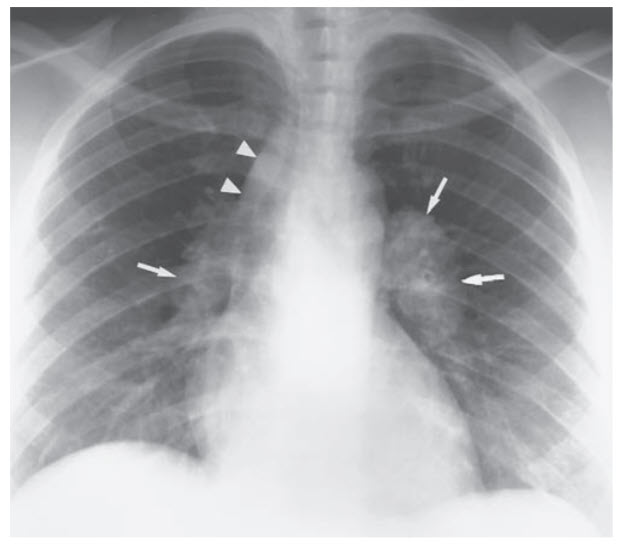Question 5#
A 33-year-old African American woman complains of fevers, night sweats, and shortness of breath over the past few weeks. Her vital signs are normal, and her lungs are clear to auscultation. She has some waxy skin plaques on her face and erythematous nodules on the anterior portion of her legs. A chest x-ray is performed, which is shown in Figure below.

Which of the following is the likely diagnosis?
A. TuberculosisB. Hodgkin lymphoma
C. Pulmonary hypertension
D. Sarcoidosis
Correct Answer is D
Comment:
Sarcoidosis. The skin findings and bilateral hilar adenopathy on chest x-ray suggest the diagnosis of sarcoidosis, and African Americans are at an increased risk. Common findings with this disease include hilar lymphadenopathy (biopsy would show noncaseating granulomas) that can produce pulmonary hypertension, erythema nodosum, waxy skin plaques, uveitis, cranial nerve palsies and other neurologic deficits, and many other findings. (A) If the patient had shortness of breath from TB, the chest x-ray would show consolidation (primary TB) or upper lobe infiltrates with or without cavitation (reactivation TB). (B) Thoracic lymphadenopathy could represent lymphoma; however, the association with skin findings makes sarcoidosis more likely. (C) Pulmonary hypertension is a complication of sarcoidosis, and is not the underlying diagnosis. Pulmonary hypertension alone would not produce hilar adenopathy or skin findings.